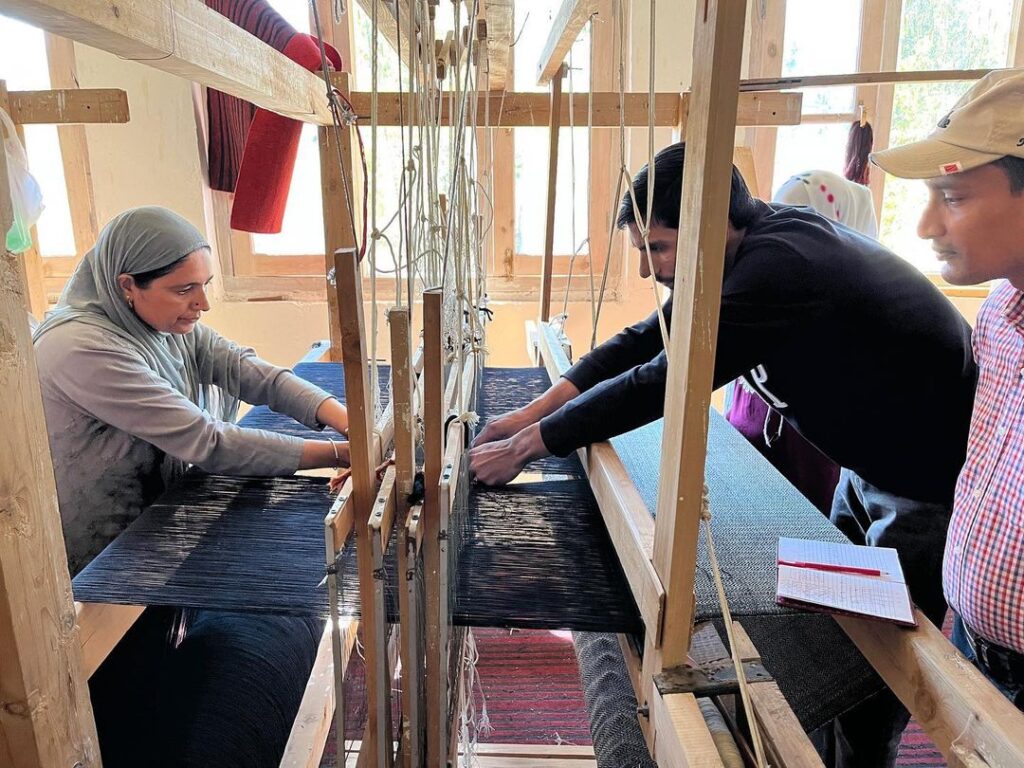Kashmir Valley, also known as the Paradise on Earth, is a region in the northernmost part of India. This beautiful valley is not only known for its breathtaking landscapes but also for its rich cultural heritage. Kashmir has a long history of producing beautiful art and crafts, which have gained global recognition. This article will take you on a journey to explore the various art forms that have originated in Kashmir Valley.
List of Kashmir Valley Arts:
- Papier-mâché
- Shawls
- Carpet Weaving
- Wood Carving
- Copperware
- Pottery
- Namda
- Crewel Embroidery
- Sozni Embroidery
- Kani Shawls
Papier-mâché

Papier-mâché is one of the most popular arts that have originated in Kashmir. The art of papier-mâché involves the use of paper pulp, glue, and plaster of Paris to create a variety of decorative items such as vases, bowls, and figurines. The art of papier-mâché in Kashmir dates back to the 15th century.
Shawls

Kashmir is also famous for its exquisite shawls, which are made from the finest wool and embroidered with intricate designs. The shawls from Kashmir are known for their softness, warmth, and elegance. They are available in a range of colors and designs.
Carpet Weaving

Carpet weaving is another art that has been practiced in Kashmir for centuries. The carpets from Kashmir are known for their intricate designs, fine texture, and durability. They are made from the finest wool and silk and are available in a variety of sizes and colors.
Wood Carving

Wood carving is a traditional art that has been practiced in Kashmir for centuries. The wood carvings from Kashmir are known for their intricate designs, beautiful patterns, and fine details. The wood carvings are made from walnut wood, which is abundant in the region.
Copperware

Copperware is another popular art form that has originated in Kashmir. The copperware items are made from pure copper and are handcrafted by skilled artisans. The copperware items include utensils, pots, and vases, which are adorned with beautiful designs.
Pottery

Pottery is a traditional art form that has been practiced in Kashmir for centuries. The pottery items from Kashmir are known for their beautiful designs and intricate patterns. The pottery items are made from clay, which is abundant in the region.
Namda

Namda is a type of felted rug that has originated in Kashmir. The namdas are made from wool and are known for their beautiful designs and patterns. They are used as floor coverings and are available in a variety of sizes and colors.
Crewel Embroidery

Crewel embroidery is a type of embroidery that has originated in Kashmir. The embroidery is done using a special type of woolen yarn and is known for its beautiful designs and patterns. The crewel embroidery is used to adorn shawls, cushions, and other decorative items.
Sozni Embroidery

Sozni embroidery is another type of embroidery that has originated in Kashmir. The embroidery is done using silk threads and is known for its intricate designs and patterns. The sozni embroidery is used to adorn shawls and other decorative items.
Kani Shawls

Kani shawls are a type of shawl that has originated in Kashmir. The shawls are made using a special type of loom, which is known as the kani loom. The kani shawls are known for their intricate designs and patterns, which are created using small wooden spindles called kanis. The kani shawls are made from fine pashmina wool and are highly prized for their beauty and elegance.
In conclusion, the arts that have originated in Kashmir Valley are a testament to the region’s rich cultural heritage. These arts are not only beautiful but also serve as a reflection of the local traditions and way of life. The art forms have been passed down through generations, and skilled artisans continue to produce them with great care and attention to detail. These arts have gained global recognition, and collectors and enthusiasts from around the world appreciate them for their beauty and elegance. By preserving and promoting these art forms, we can ensure that the rich cultural heritage of Kashmir Valley continues to thrive for generations to come.

